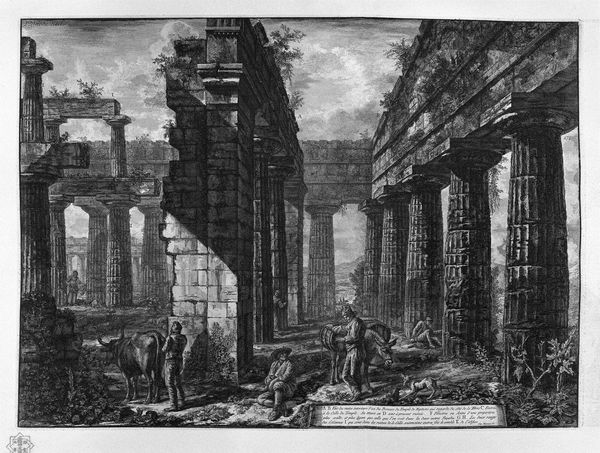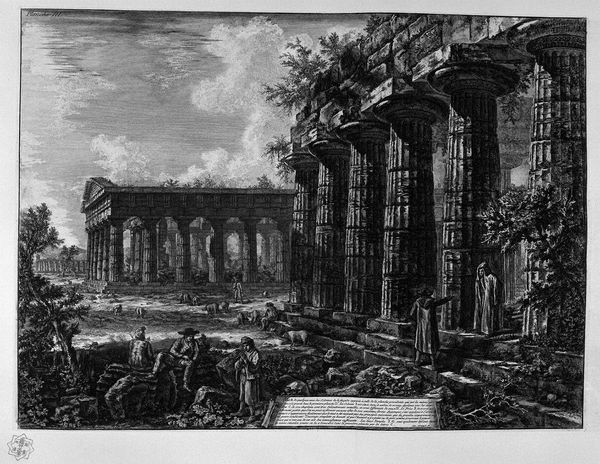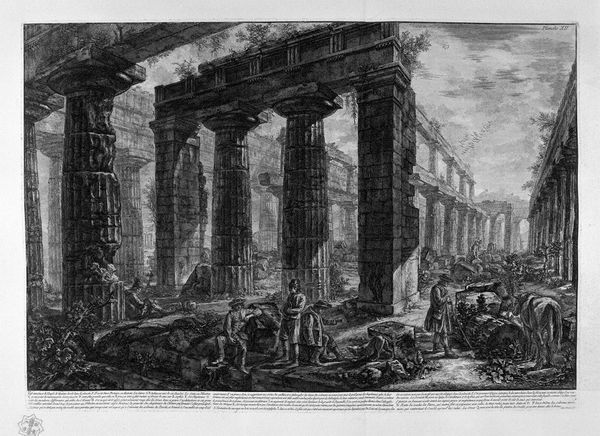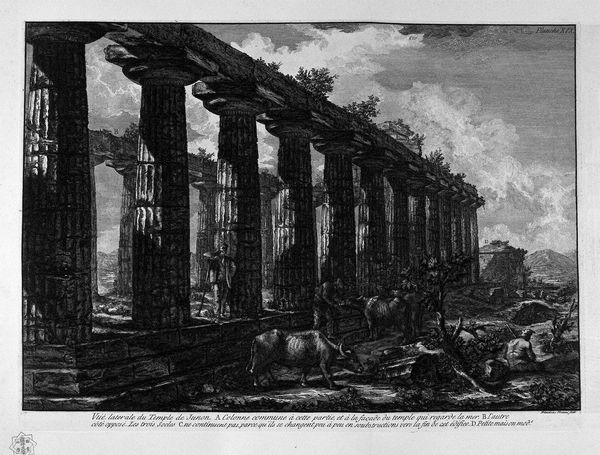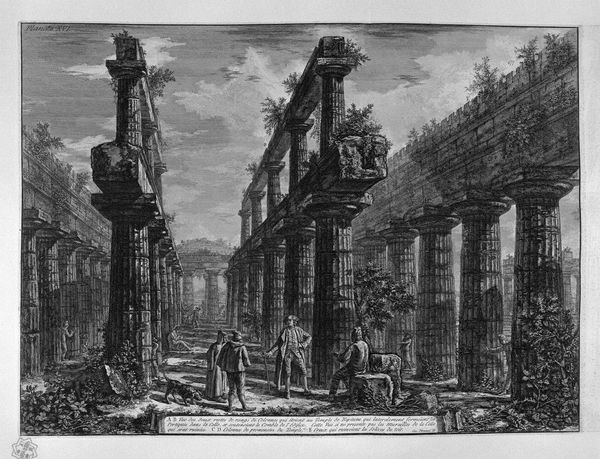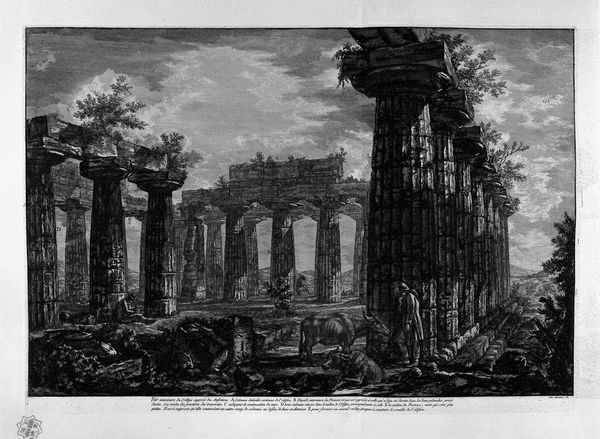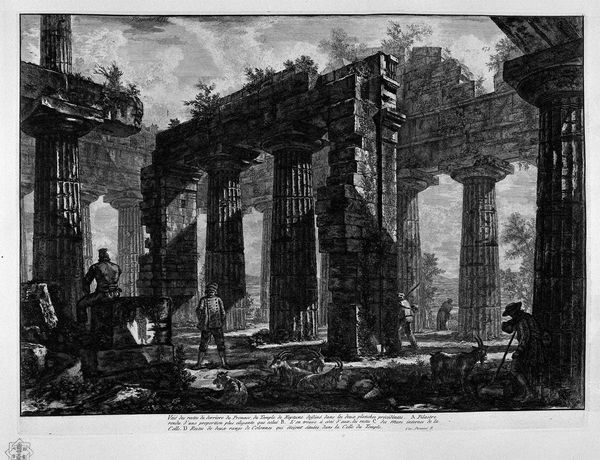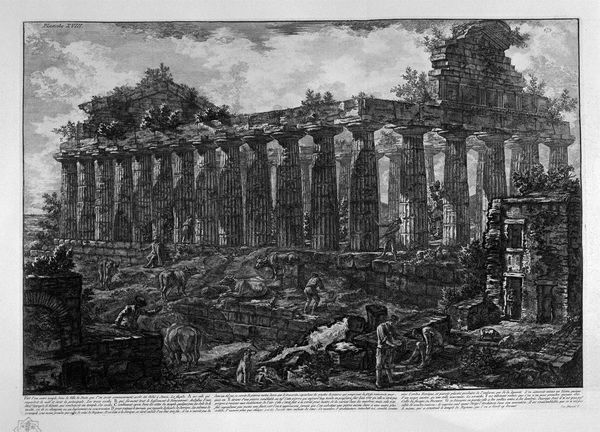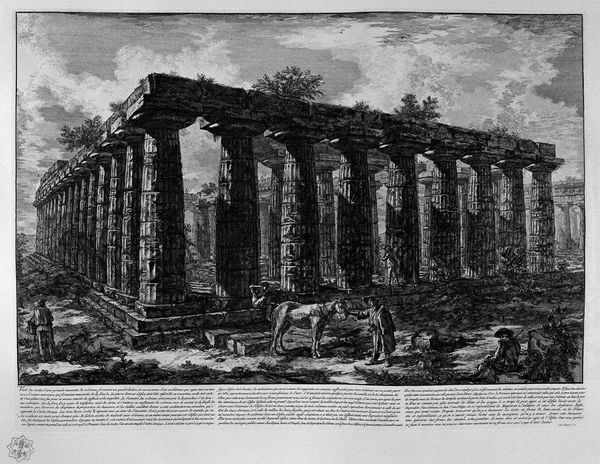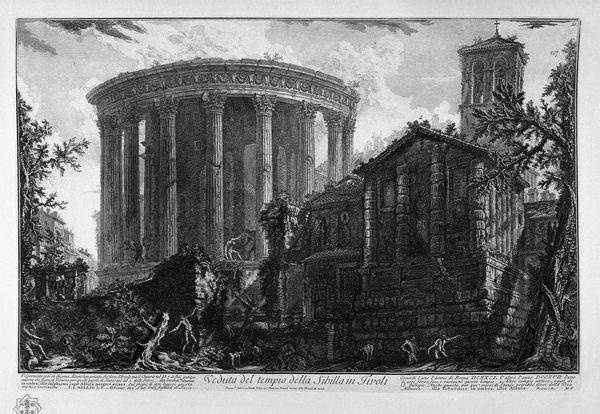
print, etching, engraving, architecture
#
neoclacissism
# print
#
etching
#
landscape
#
classical-realism
#
perspective
#
charcoal drawing
#
form
#
romanesque
#
geometric
#
classicism
#
column
#
line
#
cityscape
#
history-painting
#
engraving
#
architecture
Copyright: Public domain
Curator: This etching by Giovanni Battista Piranesi, created around 1778, is titled "Another extension as above." What are your initial thoughts? Editor: Stark. There's a ruined grandeur here. The darkness of the etching lends a real weight to the fallen architecture. It feels as though the ruin has settled. Curator: It’s quite a visual paradox, isn't it? Imposing classical architecture now occupied by commoners and livestock. Look how the columns, though incomplete, still strive upward, echoing human ambition and frailty simultaneously. Editor: Precisely. Consider the etcher's hand: the cross-hatching creates texture, implying rough stone, even decay. Printmaking allowed for multiples, and therefore for a wider distribution. Was Piranesi commenting on the availability, or even disposability, of grand narratives? Curator: Perhaps. Etchings allowed him to disseminate his romantic vision of antiquity. This place evokes a sense of historical layering. Those broken columns might symbolize shattered empires, while the roaming figures represent continuity and adaptation. Symbols of resilience, wouldn't you say? Editor: In a way, though it's difficult to fully embrace that interpretation given what we know of classical ideals concerning labor and craft. Who built this? How were the materials sourced? Where are the images of those makers represented within this landscape? The ruin is silent on that question. Curator: An absence speaks volumes, certainly. It makes me wonder, if Piranesi could envision future viewers, what meaning would he wish for us to derive from this composition? Editor: For me, the piece brings to mind a kind of morbid industrialism: an architecture undone and consumed. Its imposing, repetitive geometries rendered mute and commodified via printed image. I am left asking about what, or who, fueled such a decline. Curator: I’m struck by how Piranesi bridges past and present, then perhaps provides a template through which we grapple with cultural memory. The engraving remains, posing critical questions for each generation anew. Editor: Indeed. What better task for a fallen temple than to provoke inquiry.
Comments
No comments
Be the first to comment and join the conversation on the ultimate creative platform.
